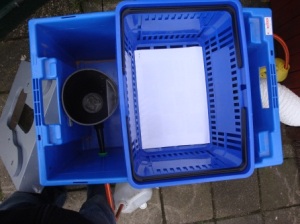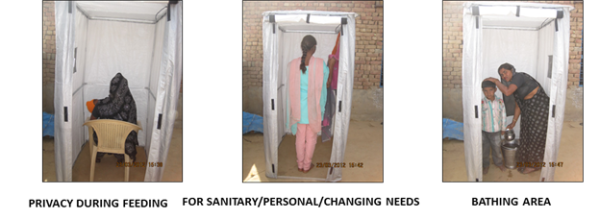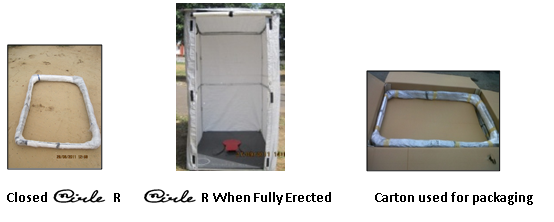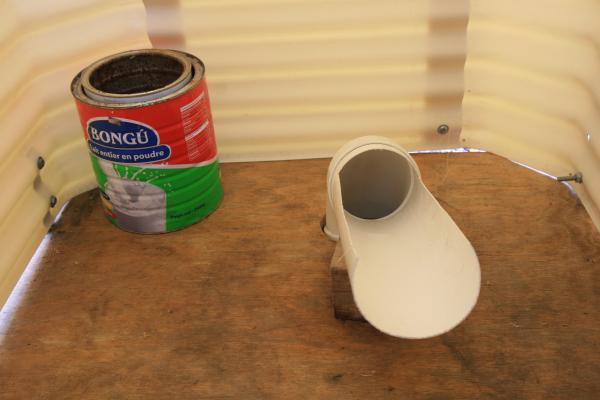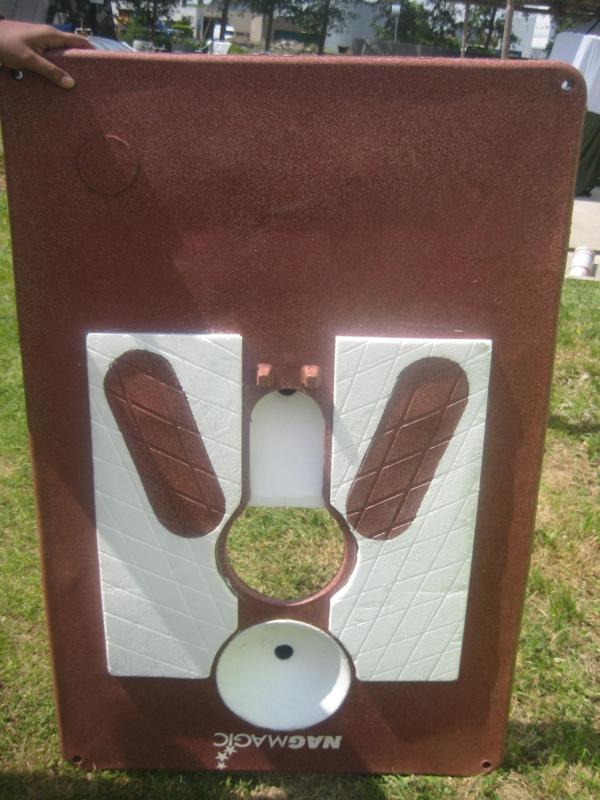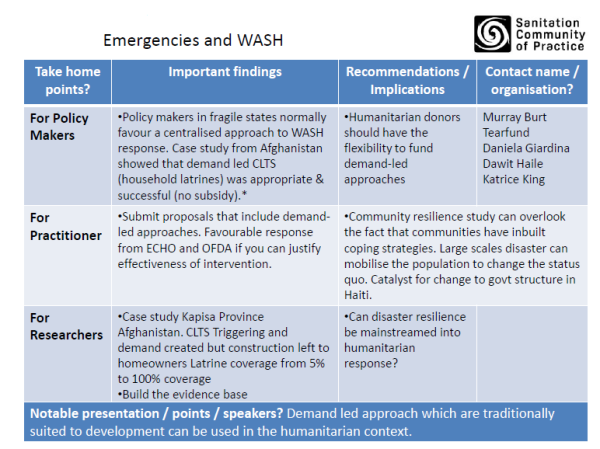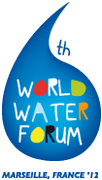Presentation of the company RED-S
By Jos Scheepens
I like to present my company RED-S and its first product, the SiSaComp. At the moment I’m still working in the Royal Netherlands Army at the corps of Engineers where I’m involved with the designing of bases abroad. Secondly I’m a bachelor educated teacher/trainer on construction works. As I was in charge to prepare a mission to Burundi we started thinking about sanitation solutions because we would go only for a few months with a small group of 30 persons. This was because we expected to spend this time under primitive conditions without the use of regular equipment. Because I have to retire from the Army in 2014 I also was looking for a way to spend my time. That was the reason to start the one-men company RED-S.
RED stands for RELIEF EQUIPMENT DEVELOPMENT and the S is from my name. It’s my policy to develop equipment out of existing articles without expensive design investments. This will make the products of RED-S suitable for NGO’s and other relief organizations.
So, the first product is the SiSaComp (Simple Sanitation by Composting). As I studied the sanitation issue I found a lot of solutions. I think that in the SiSaComp the benefits off all that solutions are united. Apart from the hygienic solutions the SiSaComp is very useful for emergency relief. That is what makes this product different from other solutions and play part in the emergency preparedness of organizations. The SiSaComp should not be seen as a secluded object; it’s part of a concept that gives the opportunity to realize not only a toilet facility but also a facility for the composting process including a way for transportation of the excreta.
The concept exists of a couple of SiSaComps, transportation boxes, canisters for urine and black water and finally breathing big bags. Time to see the SiSaComp in detail.
Toilet seat version
Squat version
As you can see on the pictures the SiSaComp can be delivered in 2 versions, whereby the squat model is most suitable for use in countries where people are used to this way of sanitation. Other solutions that use a squat plate do pollute the ground, the SiSaComp on the contrary provides in the possibility to collect and transport the excreta.
The SiSaComp is based on Urine Diverting what has the benefit that it can almost directly used as a fertilizer (after diluting with water to prevent burning of crops) and prevents the bad smell (if urine and feces are mixed). For that goal the SiSaComp is equipped with a funnel that drains with a tube to a canister.
The feces are collected in a basket where they are covered after toilet using with compostable organic substances like sawdust, leaves, peels or any other local available organic substance. The use of a basket is also necessary to drain water that is used at anal cleansing; this black water then is drained in to a separate canister. The drain is mounted a few centimeters above the bottom of the box so that small parts of feces can go down what can be the first step in the septic process. Despite of the relative big holes in the baskets that are used, the anal cleansing water will be filtered in the first place on a natural way by the organic substances. The collected black water might be brought into a biologic process by pouring it in a septic tank or an improvised septic tank system (several solutions available).
If the basket is full it can be transported to the composting site in a closed box; in the meantime it’s replaced by a new (cleaned) basket. Dependent on the level of using the necessary set of baskets varies from 2-3 pieces.
Now the excreta has arrived on the composting site, it can be dumped in a breathing big bag. The bigbags should breath so oxygen can enter in to the bag for the anaerobic process upon which the composting is based. Another benefit of the use of bigbags is that they can be replaced if necessary and also it gives the possibility to roll them over so that the complete contents will compost.
 Breathable big bags are available in different sizes
Breathable big bags are available in different sizes
Top view SiSaComp
So far the SiSaComp-concept. There is no doubt that some improvising capacity from the relief workers is necessary. For example a cabin is not provided because of transportation reasons; it’s very likely that materials to build a simple cabin must be available, even in a disaster region. Also a place to wash the baskets has to be provided; the dirty water also needs special treatment (for example to pour it in a septic tank).
It might also be necessary to teach the affected population how to use the SiSaComp-concept and how to conquer their resistance against the treatment of excreta.
Although the SiSaComp was not yet used in practice I’m convinced of the concept it’s working with. Hopefully a NGO or another organization might be helpful in this matter and gain their goals in the same time.
For more information see Linkedin <RED-S> or write to red.scheepens@gmail.com
Emergency Sanitation Workshop
- Your name and contact details
- The name of the organisation you will present, or a brief description of your personal motivation to attend (part of) the workshop
- Specific days you like to participate (Participants are encouraged to apply for the subjects/days of their interest and experience only):
Innovations Unlimited is an all women start-up entrepreneurial organisation in India, working in the field of sanitation through a patented innovation, which is a quickly deployable and cost-effective complete toilet solution especially developed in order to cater the needs of the underprivileged, conflict affected or disaster affected or displaced vulnerable communities and thus help them to lead dignified and healthy lives. The product aims at discouraging open defecation, one of the root causes to an unhealthy environment. Once the waste, as a result of open defecation, encroaches upon the drinking water, it acts as a host of a large number of water borne diseases resulting in a large number of child mortality.
The patented innovation is a quickly deployable superstructure, which ensures privacy and dignity especially to women and the girl child while catering to their personal needs like taking a bath, changing or feeding babies.
is a quickly deployable superstructure, which ensures privacy and dignity especially to women and the girl child while catering to their personal needs like taking a bath, changing or feeding babies.
The unique selling point is simplicity where the building time of a toilet superstructure takes about a minute; and hence more and more toilets can be erected within a very short time.
- Malda, West Bengal in India, by OXFAM India during a Flood Relief Response.
- Lakhimpur & Dhemaji, Assam in India, by IGSSS during a Flood Relief Response done by them.
- Sitamarhi, Bihar in India, by CARITAS India during a Flood Relief Response jointly done by CARITAS India & CORDAID India.
- Usage at the Village School in Sitamarhi, Bihar by CARITAS India.
Address:
L4A Augusta Point
Golf Course Road
Gurgaon – 122001
Haryana, India
Contact:
Shweta Bais
E-Mail: shweta.bais@onlyinnovations.com; Promita.sengupta@onlyinnovations.com
Internet: http://www.onlyinnovations.com/
Phone: Off : +91 124 4354237
Mob:+91 9811008204 or +91 9560900811
When responding to an emergency situation, ensuring safe excreta disposal is an urgent priority in the disaster relief effort. Through a project with the Technical University of Hamburg, Katherine Kinstedt (see photo) have investigated how Ecological Sanitation (Ecosan) concepts can be employed to meet these needs.
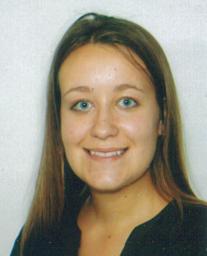
In the following report, you can find some background information on disaster relief, on Ecosan, and on why Ecosan should be considered in disaster relief work. Several examples of disaster relief situations where Ecosan methods were previously employed are described in the third section of this report. These include the discussion of four forms of Ecosan (UDDT, Arborloo, biodegradable bags and composting toilets) in six countries (Bolivia, Haiti, Chad, Philippines, New Zealand and Bangladesh).
To assist decision making in a disaster relief effort, especially within the context of deciding whether an Ecosan concept can be applied, Katherine developed a selection tool which is discussed in the fourth section of the report.
Finally, a new portable toilet was designed to apply Ecosan to meet the need for a portable toilet to ensure safer and easier access to sanitation facilities by all sections of the population, including disabled and elderly people as well as woman and children who face an increased security risk when using community toilets at night. A summary of the proposed design can be viewed in the following attachment or more detailed information can be found in the fifth section of the report. This portable toilet, named the Porta Preta, is able to control odors, hygiene the excreta and facilitate reuse of the excreta through the use of a lactic acid fermentation process. Fixed costs are estimated to be approximately $70 for the first month of operation serving a household of five individuals. The monthly cost would be approximately $0.80 per user per month. 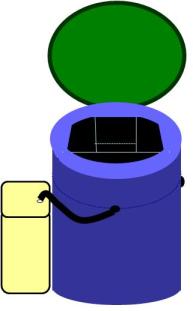
Feel free to contact Katherine if you have any further questions.
Katherine Kinstedt
katherine.kinstedt@tuhh.de
Masters Student at the Technical University of Hamburg, Germany
Elmer Sayre of WAND Foundation today sent us the following update from Cagayan de Oro City and Iligan Cities, Philippines where a small team of volunteers quickly set up urine diversion dehydration toilets (UDDTs) as emergency response after a recent typhoon.
As Elmer reported:
“Typhoon Sendong was so severe and fierce, hitting at 2 a.m. when most people were asleep, erasing in the map entire communities, scattering the living in various evacuation centers and open spaces. When the water system of Iligan and Cagayan de Oro cities was damaged and most flush toilets in the affected areas were wiped-out, the ecosan* solution is left as one of the most viable options. I asked support from friends and classmates and social network acquaintances and built and deployed portable ecosan toilets focusing mainly on the evacuation centers housing 7,000-12,000 people.”
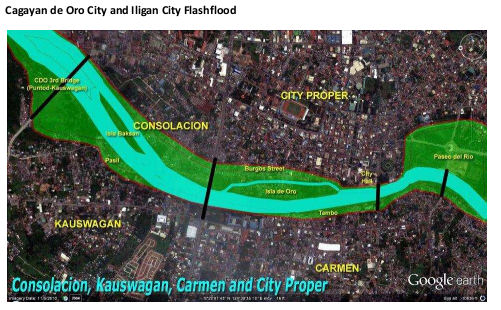
The blue area is the river running through Cagayan de Oro. The green areas are the totally devastated communities, with water up to the 2nd floor of houses at 2 am while most are sleeping. The city could not account for all the dead and missing especially that most of those living in or near the river banks are informal settlers. Isla de Oro as shown here is full of these shanty houses. Now it is tragically devoid of anything.
“When we started on the 21st December, 3 days after the typhoon, the stench of human feces in the evacuation centers were too much and fecal matter is everywhere. Now we have contained it and we are racing against time to build some more units especially for people living scattered around open spaces without sanitation facilities. Our team do constant monitoring and collection of human waste and store it in our facilities in Libertad to be processed later on as fertilizer for coconut trees.”
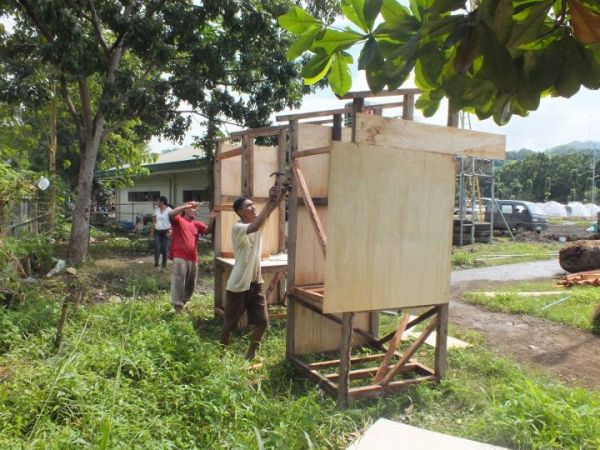
Constructing urine diversion dehydration toilets on the run-down to New Year at Tent City, Iligan, Philippines
“We are doing well and in fact, today, a Swiss humanitarian aid agency asked us to supply them with 35 portable ecosan toilets for evacuation centers in Iligan city.”
For more information on Elmer’s work, please see these two documentations “Philippines Flashflood Documentation” (PDF; 0.9 MB) and “Briefer Ecosan Wand” (PDF; 0.4 MB), feel free to directly contact WAND Foundation on their website or take part in the discussions around this emergency response via the open SuSanA forum.
*ecosan => here: Urine diversion dehydration toilets (UDDTs)
Innovative urinal and Urine Diversion Toilet by Oxfam
Female urinal
The female urinal is from Haiti. This was done in conjunction with the pee poo trial. The main logic for this was related to not using the pee poo bags only for passing urine, so the team designed urinals with the women and men, which were placed in one of the superstructures, like a normal toilet.
Urine diversion toilet
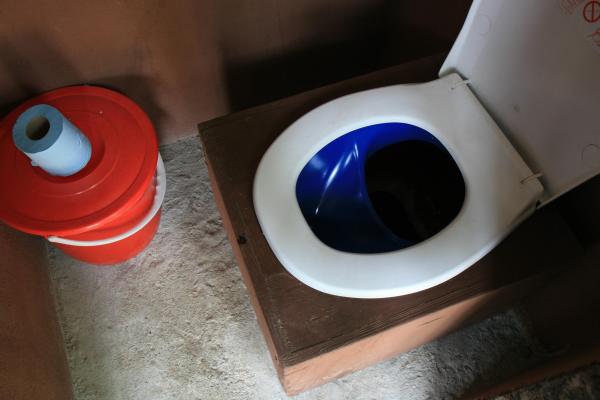
The urine diversion again is from Haiti, via Oxfam’s partner SOIL. The photo illustrates well the urine diversion slab, with a bucket beside it which has the bagass, the sugar cane by product of the local rum plant, which is added after each use the faecal matter.
Urine Diversion Slab (a prototype under development)
The Urine Diversion is an add on and can be activated if the situation allows, for example of the users accept the technology.
Thank you to Jenny Lamb from Oxfam GB who provided the images and text!
Take home points from San Cop on emergencies and WASH
Our colleagues from the UK SanCoP have put together very interesting take home points on emergency sanitation from the WEDC conference in UK in July this year (2011).
The UK sanitation community of practice (SanCoP) is an initiative is a series of sanitation workshops. The aim is to strengthen the UK sanitation sector and provide a forum for learning and debate. More specifically SanCoP aims to
- Share evidence-based knowledge and experience
- Encourage the participation of younger professionals
- Stimulate innovation and learning in science, practice learning and exchange of experiences
- Provide an opportunity for networking, inter-generational learning and mentoring
- Encourage multi-disciplinary and multi-sectoral dialogue
SanCoP events bring together a wide range of professionals with an interest in sanitation from academic and research institutions, NGOs, public and private organisations. Participants’ backgrounds’ include engineering, public health, social and political science, economics and urban development disciplines. SanCoP workshops take place twice a year under Chatham House rules allowing lively debate on topical sanitation issues.
Thank you to Christian Rieck at GIZ for providing this info.
Project Launch of 3 year research project at SEI “WASH and RESCUE”
Stockholm Environment Institute (SEI) Launches WASH and RESCUE: a 3-yr research project to find solutions saving lives and improving human and environmental health through integrating disaster risk reduction in the area of water, sanitation and hygiene sponsored by Swedish MSB
The Swedish Civil Contingencies Agency (MSB) has awarded SEI a research project to build resilience against disasters in cities, with a particular focus on the crucial role played by water, sanitation and hygiene improvements. The project will make use of experience from recent and recurring disasters and floods for example in Haiti, Mozambique, India and Sweden. For example, in areas with recurring floods such as Mozambique, it has become evident that there are benefits involved in integrating disaster risks into development which requires new thinking. With adequate infrastructure in the right place, requiring adequate zoning, construction permits, (urban planning) and enforcement of regulations then the impact of a flood in an urban area will not have the same disastrous impact on human well being and societal development.
Natural hazards do not necessarily lead to disasters, for example in 2010 two earthquakes of similar magnitude shock, Haiti (magnitude 7.0) in January and Chile in February (magnitude 8.8), but only about 3% of the lives were lost in Chile (700) compared to Haiti (250,000). One of the main reasons for this was Chile’s more advanced disaster risk reduction in terms of seismic engineering design and enforced building codes put in place as a lesson learnt from previous earthquakes. This illustrates how natural hazards, like extreme rainfall (flooding) and earthquakes, translate to disasters only when human society is unprepared for them and where infrastructure and planning has not been designed to withstand or buffer against them, and if society cannot respond adequately. The poorest populations are almost always the most seriously affected. Losses from natural disasters have averaged nearly 15 percent of the GDP in the world’s poorest countries in the past two decades, contributing to a poverty trap. Haiti is a sad example, with years of conflicts, political instability and recurrent disasters such as cyclones, floods and mudslides which have weakened Haiti’s already low capacity to invest in the long-term safety of its citizens, making it difficult to keep up progression of society.
Urban development in low and middle income countries is often increasing disaster risk because of the rapid urbanization, with maladapted infrastructure, structures and goods, in areas exposed to cyclones, floods, sea level rise, etc. where poor people move in from the countryside seeking employment and settling rapidly and unplanned on marginal lands. In effect many cities are in effect aimed for disaster. Poor local governance may be to blame, where local and central governments are unable to deliver adequate services, support and security. With more and more people living in cities, humanitarian responses are increasingly needed there, however they often do not have the adequate capacity to do so. And climate change will further complicate existing problems.
In spite of this, many organisations and decision makers do not take disaster risk reduction (DRR) seriously although most readily acknowledge the need. Implementation of these policies tends to be postponed for long periods until a disaster occurs, which only then kick starts preventive activities. Our research will look into how investment in practical, long-term risk-reducing efforts will increase resilience to natural disasters and reduce the pressure on humanitarian responses.
The research carried out in this Swedish MSB project will be for example relevant for cities engaging in the UNISDR campaign ‘Resilient cities’ where one aim is to encourage ‘Building Back Better’ and where responsible mayors take on the political leadership aiming for safer cities. Providing resilient water and sanitation services, which can cope with natural hazards like flooding, drought, cyclones and earthquakes is essential. Also, the research will look at how best to support the capacity of urban communities to mobilize themselves to learn about and improve the infrastructure systems – an often forgotten aspect. Although globally the disaster risk community is getting organized, the local level has not yet benefitted from this progress and there is very little knowledge available of what is required to enable and encourage improvements to reduce risk.
Several partners are involved in this project including:
1. Kristianstad City, Rescue Service, Sweden
2. Maputo Province, Mozambique (CLASS-A)
3. Bihar, India (WASH Institute)
4. Haiti Government – DINEPA
5. Emergency Shelter Unit (Formens Hus Foundation and IKEA Foundation)
Furthermore, the research project will benefit from engagement with different initiatives:
1) Swedish Water House (SIWI) Cluster Group for Water and Disaster Risk Reduction
2) Mistra-SWECIA at SEI, Stockholm Resilience Center
3) Swedish VAKA network
4) Sustainable Sanitation Alliance (SuSanA) working group on emergency sanitation
5) Stoutenberg Group (ACF, Oxfam, WASTE, Red Cross, MSF)
6) SEI’s network of sustainable sanitation knowledge nodes www.ecosanres.org/nodes.htm
7) UNISDR: Resilient cities campaign
8 ) Partnership for Environment and Disaster Risk Reduction (PEDRR http://www.pedrr.net ).
Contact Info:
SEI Communications – ylva.rylander@sei-international.org
SEI Research – arno.rosemarin@sei-international.org
Stockholm Environment Institute is an independent international research institute. The Institute has established a reputation for rigorous and objective scientific analysis in the field of environment and development. SEI aims to bring about change for sustainable development by bridging science and policy. www.sei-international.org
This is a copy of an SEI Press release on 13 OCT 2011, International Day of Disaster Risk Reduction. Available at Preventionweb.
Sustainable sanitation at the World Water Forum 6 (Marseille, March 2012)
Sustainable sanitation, ecological sanitation and sanitation in emergency will be present at the 6th world water forum in Marseille (March 12/17 2012).
Every three year since 1997, the World Water Forum mobilizes creativity, innovation, competence and know-how in favour of water and sanitation.
This year, the thematic process is organised in 12 “Priorities for Action”. Among these priorities for action, the second one is “Improve access to integrated sanitation services for all“. Thousands of delegates from all over the world are going to meet and discuss inovative and sustainable sanitation in any of the 8 targets of sanitation – see the list HERE
ACF will present, among others, the Ecological sanitationproject of Mongolia.
Emergency sanitation will also be presented, in the Priority for Action 1.4 “Prevent and response to water related crisis“. A first contribution was post on the Platform of solutions to present 3 solutions for emergency sanitation: the portaloos, the peepoo bag and the KK Nag Magic Slabs (see HERE).
If you have a solution, if you want to contribute, you can join the Forum. Visit the web site and send your contribution!
We are an interdisciplinary team of students at University College London currently undertaking a summer research project regarding sanitation in both disaster relief and development scenarios, in conjunction with UCL Healthy Infrastructure Research Centre and Engineers Without Borders (UCL Union). The project is supervised by Dr. Ka-Man Lai, UCL HIRC. Our work this summer is the initial phase of a project which will span for 5 years, aimed eventually at the development of a sanitation technology system which can ‘bridge the gap’ between sanitation in disaster relief and in development. The team is comprised of three sub-groups which will approach our overall research aim from engineering, socio-economic and laboratory standpoints. As part of our initial desk study and background research we are hosting an online forum which will allow the team to interact with experts and professionals working in the sector, which we would like to invite you to join. We invite anyone who would like to become involved in our research, this summer, and in the longer-term future. Please contact the team via email; sanitation.ucl@gmail.com or contact our Project Manager, Claudia Ramirez via email; claudia.ramirez@ewb-uk.org. Alternatively, if you know of a colleague or friend who also has extensive experience in a field relevant to our research, then please forward them this information or again, contact us via the email above.
This is a copy of the newsletter text of the department of Civil, Environmental & Geomatic Engineering at UCL found here.


